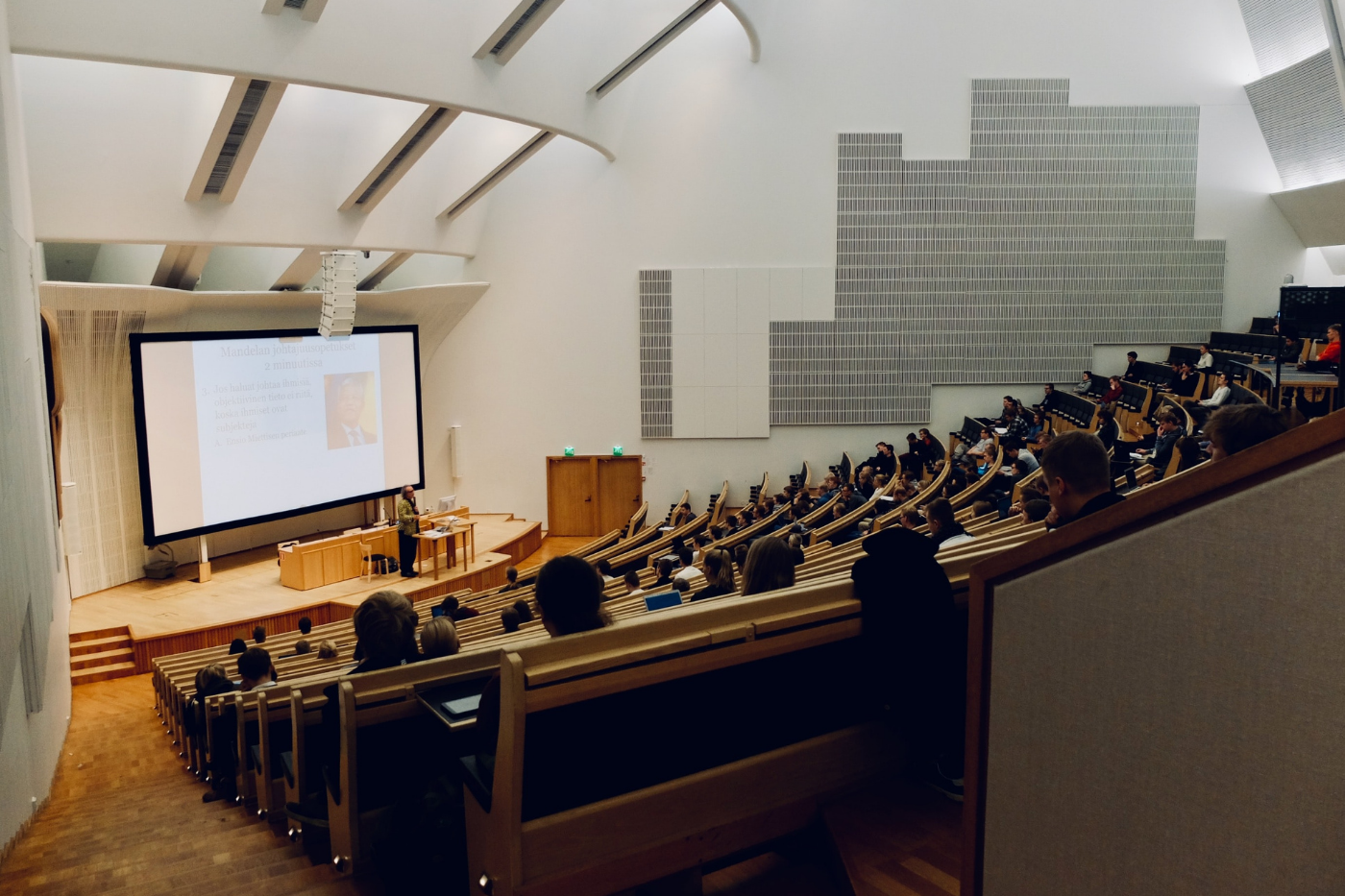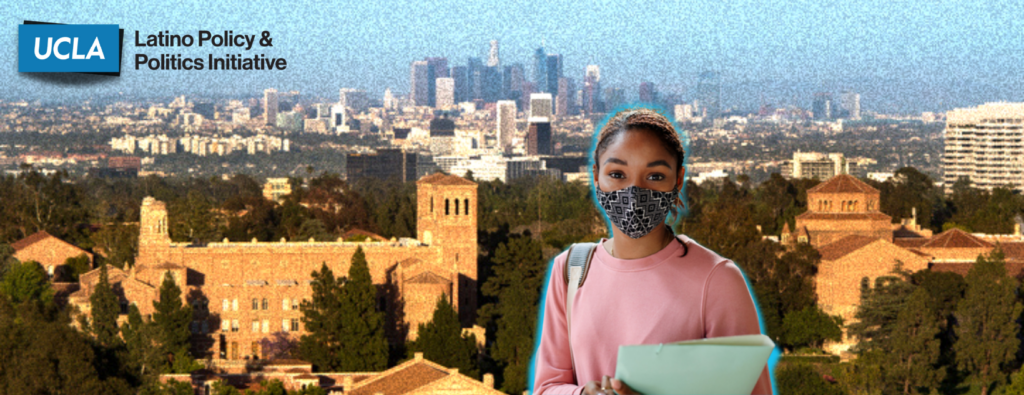
A Change of Plans: How the Pandemic Affected Students of Color and their Plans for Higher Education
Executive Summary
The COVID-19 pandemic has had unimaginable health and economic impacts with disproportionate effects on communities of color. Much less talked about are the disproportionate disruptions that the pandemic has had on educational attainment. Data from 2020 showed that almost a third of Black and Latino students had canceled their plans to continue their post-secondary education in the Fall of 2020, a much higher rate than White students, which threatened to widen pre-existing racial disparities in educational attainment.1,2 A year later, the availability of vaccines and robust investments in pandemic recovery offered renewed hope. In this factsheet, we analyze the racial disparities on the impact of COVID-19 on post-secondary education plans in 2021, and the effect of vaccine availability on these plans.
Our main findings are:
- Before vaccines were available, almost 11 percent of Latino students planned to cancel all their plans of postsecondary education in the Fall of 2021, compared to only 6.4 percent of the total population. Multiethnic (11.3%), Black (10%), and Asian (5.5%) students were also more likely to cancel post-secondary plans than White students (5.4%).
- The vaccine rollout cut the share of students who planned to cancel their post-secondary education by more than half across all racial and ethnic groups. This means that while fewer students of all races canceled their educational plans, the racial gaps in educational disruption persisted after the vaccine.
- Inability to pay was the most cited reason for educational disruptions. In addition, Multiethnic, Black, and Latino students were more likely to cancel postsecondary education plans due to economic hardship than White students, revealing another layer of the pandemic’s unequal distribution of economic hardship. Almost 45 percent of Latino and Black students canceled their educational plans because of changes in income due to the pandemic compared to 38 percent of White students who did so. The vaccine rollout had little impact on these rates.
The educational disparities reported in this factsheet, while spurred by COVID-19, reflect and perpetuate the structural barriers that continue to limit opportunities for communities of color to use higher education as a pathway to social and economic security. Delays and reductions in higher education attainment, which are disproportionately borne by Black, Latino, and Asian students, have negative cascading effects across the lifespan. Students who are forced to delay their college plans are less likely to complete that degree, and face additional challenges to school reentry the longer they must delay. Taking additional time to graduate college also creates durable negative effects on salary and expected earnings after graduation.
The economic and social constraints on students of color have only intensified after a year in quarantine, and require increased federal and institutional support to rectify these systemic inequities. A plan for post-COVID recovery at the university level cannot stop at a “return to campus,” but rather in a deepened commitment to economic redistribution and opportunity for its most vulnerable students.

Methodology
This analysis draws descriptive statistics from the US Census Bureau’s Household Pulse Survey, an experimental data product which aims to produce data on the social and economic effects of the coronavirus pandemic on American households.3 Data was collected from Phase 3 of the Household Pulse Survey, when the Census Bureau expanded questions about educational planning. Individual-level microdata was used to cross-tabulate racial characteristics against survey responses about future college plans for respondents in the survey. Microdata was merged weekly between October 28, 2020 and March 29, 2021 encompassing both the 2020 election, the inauguration of President Biden, and the approval of the coronavirus vaccine for the public.
This data was then compared against a second tranche of Household Pulse Survey microdata from Phase 3.2 of survey data collection, covering July 21-September 13, 2021. This dataset collected information from respondents after the vaccine became widely available to the general public and after significant community spread of the highly contagious delta variant of the coronavirus.4 Comparing responses before the vaccine was widely available and after community distribution also allows us to estimate the distributional effect of the vaccine rollout across different racial and ethnic groups.5
Findings
The survey results show signs that although the pandemic threatened to exacerbate educational inequities in higher education, the COVID-19 vaccine rollout has been successful in moderating some of those impacts. Across the board, though, Latinos and multiethnic students continue to be the most likely to be unable to attend college in the fall or to have reduced the number of classes they planned on taking.
Latinos and multiracial students were more likely to plan to cancel or postpone their studies than students overall. As Figure 1 shows, 10.6% of Latinos in the survey originally stated that they had plans to cancel their enrollment in postsecondary education in the fall of 2021, compared to only 6.4% of the total population. Multiethnic students and students of other races were even more likely to plan to forgo college in the fall, at 11.3%. Nearly 10 percent of Black students (9.9%) also decided not to attend post-secondary educational institutions the following fall. Asian and White students were the least likely to cancel their college or postsecondary plans, at 5.5% and 5.4% respectively.
The vaccine rollout reduced the number of survey respondents planning to forgo college-level education by more than 50% across all ethnic groups. Some racial inequalities persist, but Latinos and Multiethnic students now face only single-digit differences in college planning rates from their White counterparts.
Figure 1: Proportion of Students Who Planned to Cancel All Postsecondary Classes for the Fall of 2021, by Race or Ethnicity
Source: U.S. Census Bureau, “Measuring Household Experiences during the Coronavirus Pandemic,” accessed June 23, 2021, available online.
However, although the vaccine allowed more students of all ethnic groups to access post-secondary education, reductions in the number of classes remained persistent after the vaccine became widely available. Among students who decided to attend or continue college in some form, Figure 2 indicates that Latinos and Multiethnic students were more likely to state that they planned to take fewer classes this coming fall, both before and after the vaccine rollout. Post-vaccine, respondents were more likely to be taking their full intended course load than before, but only at slightly higher rates.
Figure 2: Proportion of Students Who Would Take Fewer Postsecondary Classes in the Fall of 2021 by Race or Ethnicity
Source: U.S. Census Bureau, “Measuring Household Experiences during the Coronavirus Pandemic,” accessed June 23, 2021, available online.
Inability to pay was the most cited reason for educational disruptions. Despite some gains granted by the COVID vaccine rollout, the economic impacts of the pandemic appear to be creating more durable problems for students of color, potentially limiting academic attainment beyond 2021. As Figure 3 shows, around 40 percent of all students who decided to take fewer classes or forgo their college plans in the Fall of 2021 did so for economic reasons. However, Latino students were nearly 5 percentage points more likely than the average student to have made that decision because they were unable to pay for educational expenses due to pandemic-induced income changes. Black and Multiethnic students are also more likely to have been economically boxed out of their plans for higher education. These findings provide additional evidence of the pandemic’s unequal distribution of economic hardship and the disproportionate impoverishment of Black and Latino communities over the past year.6,7
Figure 3: Proportion of Students Who Cancelled, Reduced, or Delayed Postsecondary Education Because of Changes in Income from the Pandemic
Source: U.S. Census Bureau, “Measuring Household Experiences during the Coronavirus Pandemic,” accessed June 23, 2021, available online.
Conclusion
These educational disparities, while spurred by COVID-19, perpetuate the structural barriers that continue to limit opportunities for communities of color to use higher education as a pathway to social and economic security. Delays and reductions in higher education attainment, which are disproportionately borne by Black, Latino, and Asian students, have negative cascading effects across the lifespan. Students who are forced to delay their college plans are less likely to complete that degree,8,9 and face additional challenges to school reentry the longer they must delay.10 Taking additional time to graduate college also creates durable negative effects on salary and expected earnings after graduation.11
The economic and social constraints on students of color have only intensified after a year in quarantine, and require increased federal and institutional support to rectify these systemic inequalities. A plan for post-COVID recovery at the university level cannot stop at a “return to campus,” but rather in a deepened commitment to economic redistribution and opportunity for its most vulnerable students.
Endnotes
1 “Impact of the Coronavirus Pandemic on Fall Plans for Postsecondary Education” (National Center for Education Statistics (NCES), Cambridge, 2021), available online.
2 Clare McCann, “New Federal Survey Data Show the Pandemic Has Hit Would-Be College Students Hard,” New America (blog), September 18, 2020, available online.
3 U.S. Census Bureau, “Measuring Household Experiences during the Coronavirus Pandemic,” accessed June 23, 2021, available online.
4 U.S. Census Bureau, “Measuring Household Experiences during the Coronavirus Pandemic,” accessed June 23, 2021, available online.
5 The Household Pulse Survey is designed as a short-timeframe and relatively low-precision survey instrument. Due to the provisional nature of this analysis, this factsheet seeks only to provide frontline information about racial and ethnic disparities during the coronavirus pandemic, and should be supplemented with results from more balanced surveys in the future
6 Ashleigh Maciolek, “COVID-19, Economic Mobility, Racial Justice, and the Middle Class,” Up Front: Middle Class Memos (blog), Brookings, December 21, 2020, available online.
7 Sang Yoon (Tim) Lee, Minsung Park, and Yongseok Shin, “Hit Harder, Recover Slower? Unequal Employment Effects of the Covid-19 Shock” (National Bureau of Economic Research, Cambridge, January 2021), available online.
8 Ken Kempner and Mary Kinnick, “Catching the Window of Opportunity,” The Journal of Higher Education 61, no. 5 (September 1, 1990): 535-47, available online.
9 Robert Bozick and Stefanie DeLuca. (2005). “Better Late Than Never? Delayed Enrollment in the High School to College Transition,” Social Forces 84, no. 1 (September 2005): 531-554, available online.
10 Josipa Roksa and Melissa Velez, “A Late Start: Delayed Entry, Life Course Transitions and Bachelor’s Degree Completion,” Social Forces 90, no. 3 (March 2012): 769-794, available online.
11 Suzanne K. Hayes, “Student Employment and The Economic Cost of Delayed College Graduation,” Journal of Business & Leadership: Research, Practice, and Teaching (2005-2012) 6, no 1, art. 14 (January 2010): 129-140, available online.
